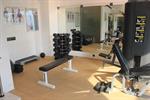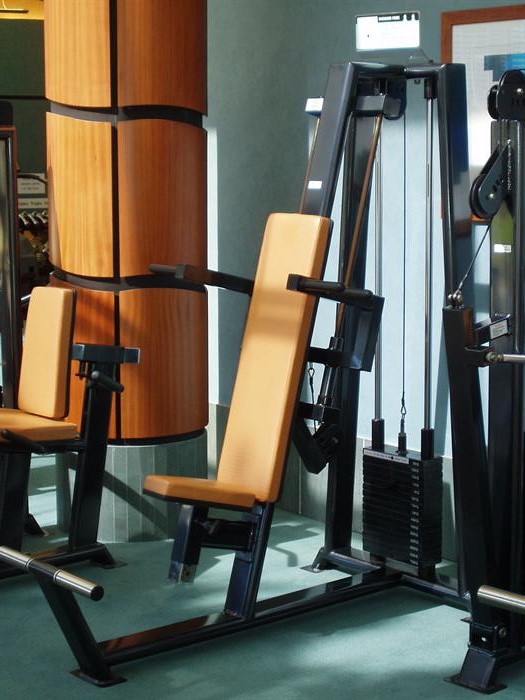
Learn all about strength training
Build muscles through a safe program of exercise and weight training.
This is a valuable course for:
- Sporting and Life Coaches
- Body Builders
- Fitness instructors and Physical Education teachers
- Allied Health Professionals
- Sports people
- Anyone wanting to better understand and improve their personal fitness
Course Structure
There are 6 lessons in this course:
1. Types of Resistance Training
-
Principles of Resistance Training
-
Principles of Exercise; frequency, testing, time, type
-
Benefits of Resistance Training
-
Types of Resistance Training; Weights, Body Building, Power Lifting, Tubing
-
Muscle Contraction
-
Isotonic, Concentric, Eccentric, Isokinetic Exercise
-
Terminology
-
Resistance Training Program Components
-
Type of Activity
-
Misconceptions about Training
-
Major Muscle Groups
2. Equipment and Applications
-
Choosing the Best Training Equipment
-
Resistance Training Systems; free weights, pin loaded machines, isokinetic, resistance bands
-
Design of Fitness Equipment; Exercise Bikes, Rowing Machines, Treadmills, Step Machines, etc.
-
Training Variables; repetitions, sets, duration, workload, intensity, training frequency, work out time, etc.
-
Overload and Over training
-
Stretching
-
Warm Up
-
Recovery and Cool Down
-
Risk Management
-
Posture
-
Gym Maintenance
-
Health and Safety
-
Gym Standards
3. Understanding Movements
-
Flexibility
-
Exercises
-
Movement and Muscles; how muscles work, Muscle Fibre, Skeletal Muscle Types,
-
Types of Movement; free active, active assisted, active resisted, relaxed passive, forced passive, etc
-
Types of Muscle Work
-
Types of Muscle Contraction
-
Physiological Adaptation
-
Muscle Tone
4. Selection of Exercises
5. Developing Training Methods
-
Training Principles
-
Principles for beginner training; intermediate principles and advanced
-
Resistance Training Tips
-
Training with Your Own Body Weight
-
Use of Resistance Training
6. Planning a Program
- Mental State for Training
- Risky Clients
- Fitness Goals
- Length of Training Phases (Cycles)
- Record Results and Make Changes as You Go
Each lesson culminates in an assignment which is submitted to the school, marked by the school's tutors and returned to you with any relevant suggestions, comments, and if necessary, extra reading.
Course Aims
- Identify different types of resistance training, the purpose of each, and explain the misconceptions that are commonly held about training.
- Demonstrate a working knowledge of types of resistance training equipment available, its use, care and maintenance and application to training variables and client program needs.
- Recognise correct resistance training form in exercises and apply correct techniques where necessary in demonstrating and instructing.
- Select training methods and programming principles relevant to increasing strength, power, speed, local muscular endurance, cardio vascular endurance and weight loss.
- Outline the training method relevant to increasing strength, cardio vascular efficiency, muscular endurance, physical rehabilitation and programs for sports people.
- Plan and describe elementary circuit or resistance training programs for non risk clients.

Scope of the course.
This course covers all aspects of strength training; and provides a wonderful opportunity to learn from highly skilled and qualified professionals in fitness and human health science.
Resistance training increases muscle strength by pitting the muscles against a weight, such as a dumbbell or barbell. The muscle cells adapt to the extra workload by enlarging (hypertrophy) and recruiting greater numbers of nerve cells to aid contraction. Understanding the principles of muscle contraction can help you reach your fitness goals faster. It is important to pay attention to safety and good form to reduce the risk of injury. If you are overweight, over 40 years, have a pre-existing medical condition or haven’t exercised in a long time it is important to consult with a doctor before starting any new exercise program.
The basic principles of resistance training include:
- Type of lift - you need to tailor your workout to address specific body areas. For example, if you want bigger and stronger arms, you need to use exercises that target those particular muscles.
- Intensity - the faster the lift, the greater the intensity.
- Volume - the greater the number of lifts, the more profound the increase in muscle size and strength. You can increase the volume by either training frequently (say, four times per week instead of two) or else training for longer per session (such as one hour instead of 30 minutes).
- Variety - switching around your workout routine, such as regularly introducing new exercises, challenges your muscles and forces them to adapt with increased size and strength.
- Progressive overload - gradually increasing your weights forces your muscles to grow stronger and larger.
- Rest - you need to rest between sets. If your goal is muscle size or endurance, rest for two minutes or so. If you want muscle strength, allow up to four minutes between sets.
- Recovery - muscle needs time to repair and grow after a workout. A good rule of thumb is to rest the muscle group for at least 24 hours to allow sufficient recovery time before working the same muscle groups again.
Principles of exercise
FITT is an easy way to remember the variables of an exercise program that you can manipulate in order to constantly challenge yourself.
Frequency - how often you exercise
Intensity - how hard you exercise
Time - how long you exercise
Type - the type of exercise you're doing (i.e. running, walking, etc.)
When you workout at sufficient intensity, time and frequency, your body will improve (also called the 'Training Effect') and you will start to see changes. When your body adjusts to your current FITT levels, it's time to manipulate one of more of them. For example, if you've been walking 3 times a week for 20 minutes and you've stopped seeing improvement, you can change the following:
Frequency - Add one more day of walking
Intensity - Add short bursts of jogging, speed walking or hill training
Time - Add 10-15 minutes to your usual workout time
Type - Do a different activity such as cycling, swimming or aerobics
*Changing any of these variables every 4 to 6 weeks can help you keep that training effect going.